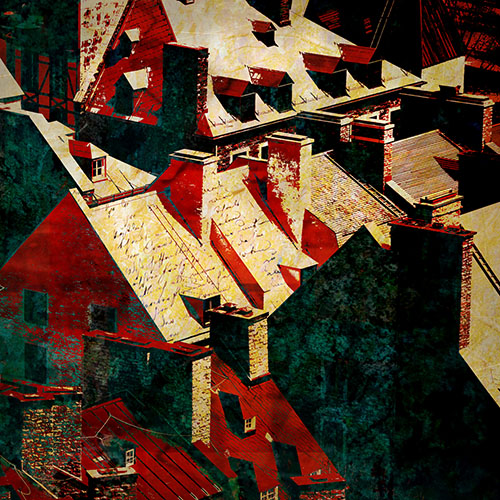Artist Liz Ruest offers her fascinating and complex portfolio composed of digital layers. Enjoy and see more of her work by visiting her website.
Fuelled by printmaking and photography, Liz combines layers of digital images to build an abstracted concept from collaged pieces.
Growing up, Liz was often drawing or taking pictures, when she didn’t have her nose in a book. When it was time for college, though, she went for a practical technical degree, taking just enough fine arts classes for balance.
After a long stint in the computer field, a friend observed that she had abandoned art. Realizing her balance was off, she switched her focus to family and art, and has been juggling both since 1998.
Her search for a layered, translucent effect began with work in acrylic mediums and encaustic. In 2010, Liz tried digital layering and hasn’t looked back! The many available effects and output options are inspiring. She’s found a way to tie in her technical training while still nurturing the visual part of her brain.
Landscapes form the core of Liz’s imagery, ranging from trees and a clear horizon line to urban and close-up botanicals. Figurative work is less common, but is revealed through family photos, French language, and maps: the Ruest family genealogy reaches through Ontario and Quebec, back to France in the 1600s.
Weathered textures stand in as historical reference, and help her explore abstraction to reach a more recognizable concept, even as the details are glazed over. As a whole, the work explores the memory of landscape and the journey through place and time.
Liz’s work process has multiple fronts, which she documents on her site. Photography supplies the base imagery, as well as texture and color, or sometimes, just interesting details to tuck away for later. Watercolor media, collage, and monoprinting allow her to stay in tune with the physical art process and provide additional texture.
A scanner provides additional digital fodder from prints, family photos, old books, or fabric. The collection of textures are layered, coordinated by theme and color, to create a base palette. With the base imagery assembled, Liz pulls out focal points, choosing detail images to layer in, and bringing in the palette textures for even more richness. She reveals or hides layers with masks, which can themselves be complex.
Technology not only provides Liz great flexibility for her digital processes; it’s also a source of inspiration.
Liz Ruest invites you to connect with her through her website or newsletter, her Facebook page, or on Twitter.













fabulous work!